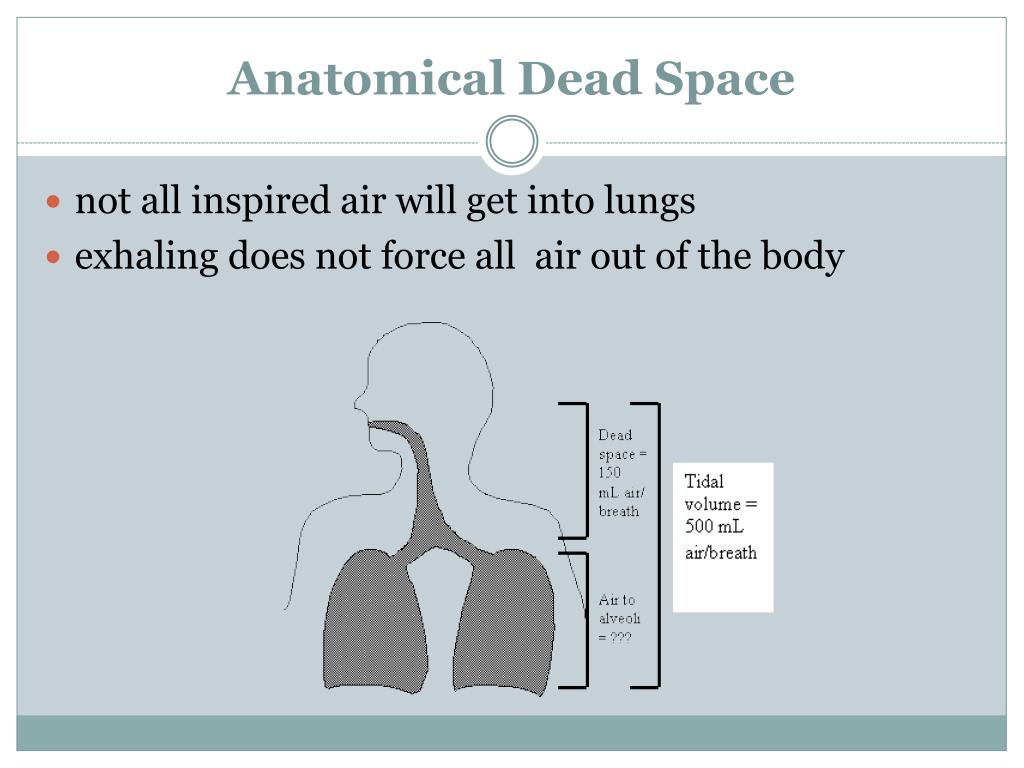

Minute ventilation was higher in both infants with RDS or BPD compared to the controls. The dead space was higher in 35 infants with respiratory distress syndrome (RDS) and in 26 infants with bronchopulmonary dysplasia (BPD) than in 20 term controls with no respiratory disease. ResultsĮighty-one infants with a median (range) gestational age of 28.7 (22.4–41.9) weeks were recruited. Alveolar ventilation ( V A) was also calculated. Volumetric capnograms were constructed to calculate the dead space using the modified Bohr–Enghoff equation. Expiratory tidal volume and carbon dioxide levels were measured. MethodsĪ prospective study of mechanically ventilated infants was undertaken. We determined if there were differences in dead space and alveolar ventilation in ventilated infants with pulmonary disease or no respiratory morbidity. Dead space is the volume not taking part in gas exchange and, if increased, could affect alveolar ventilation if there is too low a delivered volume.


 0 kommentar(er)
0 kommentar(er)
